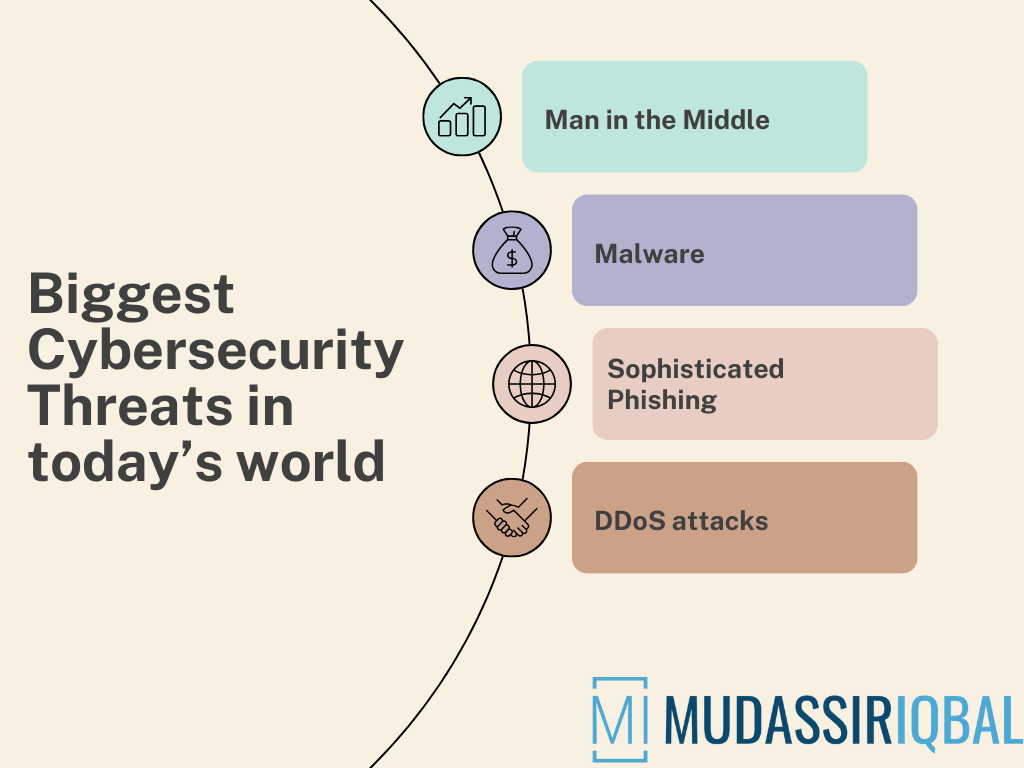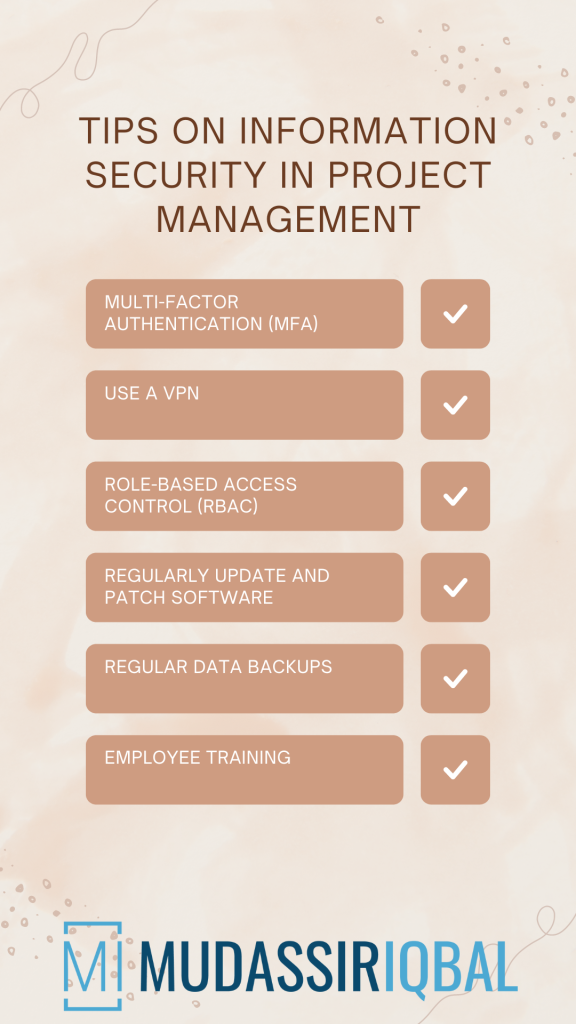Managing projects successfully is heavily intertwined with ensuring stringent cybersecurity practices in the current era of constant digital innovation. With firms leaning into technological solutions to facilitate their projects, the risk of cyberattacks escalates. The ramifications of inadequate cybersecurity – from leaks of confidential information to interruptions in business operations – can be crippling. This comprehensive examination unveils ten critical tactics that blend traditional project management savvy with cutting-edge cybersecurity expertise. Embark with us on this mission to fortify your projects and secure your precious data with Strategies to Enhance the Cybersecurity of your organization and project.

Biggest Cybersecurity Threats in Project Management
Man in the Middle
Consider the following situation: you’re engaged in a confidential chat with a work associate using a supposedly secure channel when, out of the blue, an intruder intercepts the conversation, impersonating you and sending falsified messages to your colleague. This alarming breach can result from unauthorized access by cybercriminals intent on obtaining sensitive data and distorting communication for their gain.

Malware
Beware of downloading malicious software, which can be a gateway for cybercriminals to access your sensitive information. The term “malware” encompasses a range of harmful files and programs, including worms, trojans, viruses, and ransomware.
Statistics from 2021 indicate that a significant 68.5% of companies fell victim to malware intrusions. The surge in these attacks coincides with the global spread of COVID-19, suggesting a related increase in cyber threats during the pandemic.
Sophisticated Phishing
Phishing involves deceptive tactics where a perpetrator dispatches a fraudulent message to manipulate an individual into disclosing sensitive data or to insert malicious software onto the target’s system.
DDoS attacks
Cyberattacks of this nature are capable of disrupting network operations, rendering them unavailable to its users. Perpetrators might be driven by political or societal motives, often targeting businesses with controversial practices. In other cases, such attacks are conducted merely as a means of entertainment or to showcase the hacker’s latest advancements in compromising system integrity.
Tips on Strategies to Enhance Cybersecurity
Multi-Factor Authentication (MFA)
Multi-factor authentication (MFA) provides a fortified barrier that extends past mere passwords. Enforced by requiring users to present a combination of verifications, MFA ensures security through known secrets like passwords, possessed items such as mobile-generated codes, or inherent attributes including biometric identifiers like fingerprint scans. This additional verification significantly diminishes the risk of unwarranted entry.

Use a VPN
To improve cyber security, you need to secure your connection. VPN is the easiest way to achieve this. Provided you have a technically advanced VPN, you can protect yourself from most cyber threats. For example, VeePN allows you to prevent a phishing attack, DDoS attacks, data interception and theft, MitM attacks and some others. VeePN alone protects against many types of vulnerabilities, although not all.
Role-Based Access Control (RBAC)
To safeguard your project, implement a role-based access control framework. This system gives individuals access privileges strictly aligned with their job responsibilities—adhering to the ‘least privilege’ principle. It restricts access rights for users to the bare minimum needed to complete their duties. Consequently, in the event of a security breach, this mitigates the risk and limits the extent of possible harm.
Regularly Update and Patch Software
In the dynamic field of cybersecurity, maintaining up-to-date software becomes as crucial as strengthening your project management stronghold with cutting-edge defences. It may seem like a routine chore, but it plays a pivotal role in bolstering your digital fortifications to ward off cyber threats. Today, we’ll explore the critical importance of frequently upgrading and patching your software to minimize cybersecurity risks in your projects.
Regular Data Backups
Picture the following situation: You’re nearing the completion of an essential project, and up to this point, everything’s been going without a hitch. Out of nowhere, you’re hit with a cyberattack, and before you know it, your project’s data is under lock—encrypted and out of reach. Anxiety kicks in as ticking clocks remind you of fast-approaching deadlines. Regrettably, this is the grim reality faced by numerous organizations that overlook the critical need for consistent data backups.
Data stands as the backbone of any venture. It encompasses your task schedules, financial dealings, confidential client details, and the investment of uncountable work hours. The loss of such information could spell disaster, leading not only to a drain on your time and fiscal resources but also potentially tarnishing your reputation and shaking the confidence of your clients.
Employee Training
In our digital age, even the smallest business isn’t safe from cyber threats. The key to strengthening your company’s defences lies with your most valuable asset – your team. No matter how sophisticated your cybersecurity measures might be, they’re not foolproof if your employees are unprepared.
- Your team forms the frontline of your cybersecurity defence. When they know what to watch out for, they become capable guardians of your digital fort. Employees trained in cybersecurity can spot the red flags of phishing emails or malicious links, taking proactive steps to protect your business’s data.
- Manipulative cyber attackers use social engineering to trick employees into giving away confidential information. Regular training sessions can build a human shield against these insidious threats, coaching your staff to identify and defuse such situations confidently.
- As more people work from home, the lines between “safe” and “risky” environments blur, increasing the chances of security breaches. Cybersecurity training equips your remote workforce with the knowledge to maintain secure connections, create strong passwords, and handle data responsibly, wherever they are.
Conclusion
To safeguard your project effectively against cyber threats, it’s essential to adopt a strategic and all-encompassing strategy. Make sure you’ve set up solid authentication measures, keep systems up-to-date constantly, educate your team on cybersecurity protocols, and follow encrypted communication methods.
These steps are crucial to minimize the likelihood of cyber-attacks. It’s worth noting that robust cybersecurity isn’t just about protecting data—it’s also about ensuring the uninterrupted operation of project management. Always remain alert, stay updated on the latest security trends, and maintain a secure environment for your projects.

